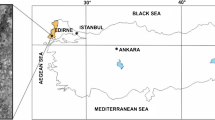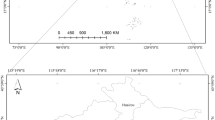Abstract
The Geoeye-1 satellite, launched in September 2008, is able to acquire imagery in panchromatic mode, with a spatial resolution of 0.41 m at nadir, offering the most powerful way to obtain detailed imagery actually commercially available.
The aim of the work is to evaluate the quality of the GeoEye-1 products through radiometric and geometric analysis; the area test is the city of Rome.
Radiometric quality of the image has been evaluated estimating the level of noise and the characteristic of the Modulation Transfer Function - MTF, that gives an index about the image sharpness.
The second part of the research is focused on the evaluation of the geometric capability of Geoeye-1 satellite. The image has been oriented using two different methods: the rigorous model and the Rational Polynomial Function (RPFs) model with the Rational Polynomial Coefficients (RPCs). The results were analysed in order to compare the orientation quality obtained from different model and different software, in terms of accuracy achievable from the image.
Access this chapter
Tax calculation will be finalised at checkout
Purchases are for personal use only
Preview
Unable to display preview. Download preview PDF.
Similar content being viewed by others
References
Baltsavias, E.P., Pateraki, M., Zhang, L.: Radiometric and Geometric Evaluation of IKONOS Geo Images and Their Use for 3D Building Modeling. In: Joint ISPRS Workshop on High Resolution Mapping from Space (2001)
Choi, T.: IKONOS Satellite on Orbit Modulation Transfer Function (MTF) Measurement using Edge and Pulse Method. Master Thesis, South Dakota State University (2002)
Crespi, M., De Vendictis, L.: A Procedure for High Resolution Satellite Imagery Quality Assessment. Sensors 9(5), 3289–3313 (2009)
Crespi, M., Fratarcangeli, F., Giannone, F., Pieralice, F.: Chapter 4 - Overview on models for high resolution satellites imagery orientation. In: Li, D., Shan, J., Gong, J. (eds.) Geospatial Technology for Earth Observation data. Springer, Heidelberg (2009)
De Vendictis, L.: Quality assessment and enhancement of High Resolution Satellite Imagery for DSM extraction. PhD Thesis, Area di Geodesia e Geomatica Dipartimento di Idraulica Trasporti e Strade, Sapienza Universit di Roma (2007)
Golub, G.H., Van Loan, C.F.: Matrix Computation. The Johns Hopkins University Press, Baltimore and London (1993)
Hanley, H.B., Fraser, C.S.: Sensor orientation for high-resolution satellite imagery: further insights into bias-compensated RPC, http://www.isprs.org/istanbul2004/comm1/papers/5.pdf
Kohm, K., Mulawa, D.: On-Orbit Geolocation Accuracy andImage Quality Performance of the GeoEye-1High Resolution Imaging Satellite. In: GeoEye JACIE Conference Fairfax, Virginia (2009)
Tao, C.V., Hu, Y.: 3D reconstruction methods based on the rational function model. Photogrammetric Engineering & Remote Sensing 68(7), 705–714 (2002)
Toutin, T.: Geometric processing of remote sensing images: models, algorithms and methods (review paper). International Journal of Remote Sensing 10, 1893–1924 (2004)
Zhang, L.: Automatic Digital Surface Model (DSM) Generation from Linear Array Images. PhD Dissertation, Institute of Geodesy and Photogrammetry, ETH Zurich (2005), ISBN 3-906467-55-4
Author information
Authors and Affiliations
Editor information
Editors and Affiliations
Rights and permissions
Copyright information
© 2010 ICST Institute for Computer Science, Social Informatics and Telecommunications Engineering
About this paper
Cite this paper
Crespi, M., Colosimo, G., De Vendictis, L., Fratarcangeli, F., Pieralice, F. (2010). GeoEye-1: Analysis of Radiometric and Geometric Capability. In: Sithamparanathan, K., Marchese, M., Ruggieri, M., Bisio, I. (eds) Personal Satellite Services. PSATS 2010. Lecture Notes of the Institute for Computer Sciences, Social Informatics and Telecommunications Engineering, vol 43. Springer, Berlin, Heidelberg. https://doi.org/10.1007/978-3-642-13618-4_27
Download citation
DOI: https://doi.org/10.1007/978-3-642-13618-4_27
Publisher Name: Springer, Berlin, Heidelberg
Print ISBN: 978-3-642-13617-7
Online ISBN: 978-3-642-13618-4
eBook Packages: Computer ScienceComputer Science (R0)




